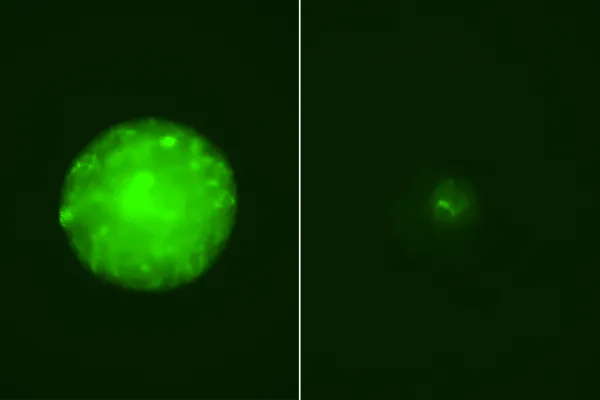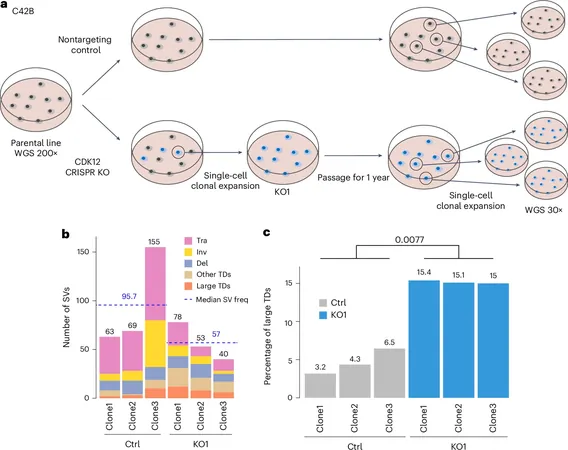
Groundbreaking Study Uncovers How Deadly Glioblastoma Evades Treatment—New Hope for Patients?
2024-11-21
Author: Daniel
Introduction
A revolutionary new study from the UCLA Health Jonsson Comprehensive Cancer Center has shed light on the reasons behind glioblastoma's notorious resistance to treatment. Glioblastoma is one of the most lethal forms of brain cancer, and this study opens doors to potentially groundbreaking personalized therapy approaches for those affected.
Research Methodology and Findings
Published in Nature Communications, the research pioneers a combined methodology of genetic and functional profiling. This novel strategy not only analyzes the genetic characteristics of a tumor but also observes how living cancer cells react to various treatments. The integrated approach enables clinicians to predict treatment responses more accurately, spotlighting fresh avenues for targeted therapies against the aggressive brain tumor.
Expert Insights
Dr. David Nathanson, the study’s senior author and molecular pharmacology expert at UCLA, highlights the limitations of traditional cancer treatments based solely on genetic profiling. "While many therapies focus on genetic mutations, these genomic features alone cannot forecast treatment efficacy," he explained. "Our study transcends beyond just genetic analysis. By merging genetic data with functional tests, we're able to capture a more comprehensive view of cancer cell behavior and, importantly, treatment response."
Resistance Mechanisms
Glioblastoma’s resistance to cell death—scientifically referred to as apoptosis—complicates treatment attempts. Conventional precision medicine typically relies on DNA sequencing to identify potential treatment matches. However, such methods provide only a fleeting glimpse into a tumor's characteristics and often overlook the intricate genetic dynamics and adaptability of brain tumors.
BH3 Profiling and Real-time Observations
To address these challenges, Nathanson and his team utilized a technique known as BH3 profiling, which allows them to observe tumor reactions in real-time. This research revealed that standard treatments, such as radiation and chemotherapy, can alter the tumor’s death mechanisms, influenced by specific genetic factors like an active p53 gene.
Machine Learning Tool: GAVA
Furthermore, the researchers developed a machine-learning tool named GAVA, designed to assess both genetic and functional data. This innovative tool aids in predicting glioblastoma reactions to varied treatment combinations more accurately. In preclinical models, GAVA signaled promising predictions about which tumors would respond favorably to combined treatments, particularly those blocking the protein BCL-XL, which plays a crucial role in enabling cancer cells to resist death.
Experimental Drug ABBV-155
The study also explored an experimental drug called ABBV-155, an antibody-drug conjugate designed to specifically target BCL-XL in tumors while leaving healthy cells unharmed. "This combination resulted in notable tumor shrinkage, a response rarely witnessed in clinically relevant glioblastoma experiments," Nathanson said, expressing optimism for the future of treatment regimens.
Future Prospects
Dr. Timothy Cloughesy, a distinguished professor of neuro-oncology at UCLA and co-author of the study, remarked that these findings could lead to the development of tailor-made therapies, significantly enhancing patient outcomes grappling with this formidable disease.
Conclusion
As the researchers transition from promising laboratory results to clinical trials, the hope is to evaluate the effectiveness of this new treatment approach in real-world patient scenarios. The potential for improved survival rates and quality of life for those diagnosed with glioblastoma looms larger than ever.
Ongoing Innovations in Cancer Treatment
With ongoing advancements in personalized medicine, the fight against glioblastoma may be entering a transformative phase, offering new hope to patients and families affected by this devastating condition. Keep your eyes peeled—exciting developments are on the horizon in cancer treatment!



 Brasil (PT)
Brasil (PT)
 Canada (EN)
Canada (EN)
 Chile (ES)
Chile (ES)
 España (ES)
España (ES)
 France (FR)
France (FR)
 Hong Kong (EN)
Hong Kong (EN)
 Italia (IT)
Italia (IT)
 日本 (JA)
日本 (JA)
 Magyarország (HU)
Magyarország (HU)
 Norge (NO)
Norge (NO)
 Polska (PL)
Polska (PL)
 Schweiz (DE)
Schweiz (DE)
 Singapore (EN)
Singapore (EN)
 Sverige (SV)
Sverige (SV)
 Suomi (FI)
Suomi (FI)
 Türkiye (TR)
Türkiye (TR)